Baby Banana Phase Monkey Tail Skink For Sale
$1,499.99
WE HAVE BABY BANANA PHASE MONKEY TAIL SKINK FOR SALE. HERE ARE SOME HIGHLIGHTS:
- Corucia zebrata
- Farm Bred
- Approximately 14 – 15 Inches In Length From Head To Tail
- Adults Can Reach Up To Lengths Of 32 Inches In Total
- These Are Voracious Foragers Feeding On Fresh Fruits And Vegetables
FUN FACTS!
- These Skinks Have Prehensile Tails Meaning They Can Grip And Grab Things With Their Tails
- Gorgeous Animals Not Frequently Seen Here At Underground Covered In Rich Green And Brown Patterns Giving Them Perfect Camouflage
- Naturally Occurring Out Of The Solomon Islands
- These Skinks Have Prehensile Tails Meaning They Can Grip And Grab Things With Their Tales
- Females Are Viviparous Meaning That They Bear Live Young
- With Proper Care These Can Live More Than 20 Years In Captivity
Banana Phase Monkey Tail Skink
The Banana Phase Monkey Tail Skink, scientifically known as Corucia zebrata, is a remarkable reptile species that has garnered attention due to its distinctive physical characteristics and intriguing behavior. Endemic to the Solomon Islands, these skinks are also known by their other common name, the Solomon Islands Skink. Their most notable feature is their prehensile tail, which they use adeptly to grasp branches and navigate through their arboreal habitat, much like a monkey. This unique adaptation not only distinguishes them from other skink species but also contributes significantly to their survival in the wild.
Physically, the Monkey Tail Skink is quite impressive. They are among the largest skinks in the world, with adults typically reaching lengths of 32 inches, including their tail. Their robust bodies are covered in smooth, overlapping scales that come in various shades of green, brown, and gray, often adorned with a pattern resembling zebra stripes. This coloration provides excellent camouflage against the lush, leafy backdrop of their natural environment. Additionally, their strong limbs are equipped with sharp claws, aiding in their climbing proficiency.
The natural habitat of the Monkey Tail Skink is the dense tropical rainforests of the Solomon Islands. These skinks are primarily arboreal, spending most of their lives in the upper canopy where they feed on leaves, fruits, and flowers, making them one of the few herbivorous skink species. The complex structure of the rainforest provides both the food resources and the shelter necessary for their survival. Their preference for high humidity and warm temperatures is a direct reflection of the climatic conditions of their native range.
What makes the Monkey Tail Skink particularly fascinating is not just its physical attributes or habitat but also its social behavior. Unlike many reptiles that lead solitary lives, Monkey Tail Skinks are known to form social bonds and live in family groups. This aspect of their behavior offers a unique opportunity to study social interactions and communal living in reptiles, adding another layer to their appeal and underscoring the importance of their conservation.
What is Banana Phase?
The term “Banana Phase” refers to a specific and unique coloration pattern found in some Monkey Tail Skinks, scientifically known as Corucia zebrata. This phase is characterized by a vibrant yellow hue intermixed with black and brown markings, reminiscent of the coloration of a ripe banana. These distinct colors set the Banana Phase Monkey Tail Skink apart from other skinks, which typically exhibit more muted and uniform shades of green and brown.
The Banana Phase is not only visually striking but also relatively rare, making it a highly sought-after variation among reptile enthusiasts and collectors. The rarity of this phase is attributed to its genetic uniqueness, which does not occur frequently in the wild. Breeding programs have been established to increase the availability of Banana Phase Monkey Tail Skinks, but they remain a prized possession due to their uncommon appearance.
The appeal of the Banana Phase extends beyond its rarity and aesthetic. Enthusiasts appreciate the intricate patterns and the vivid contrast between the yellow and darker markings. This distinctive look provides an added layer of fascination for those who keep and breed these skinks, contributing to their popularity in the exotic pet trade. Additionally, the Banana Phase Monkey Tail Skink retains all the intriguing behavioral traits and ecological adaptations of the species, such as their prehensile tails, social structures, and arboreal lifestyle.
In conclusion, the Banana Phase represents a captivating and rare coloration pattern within the Monkey Tail Skink species. Its striking visuals, combined with the species’ unique behavioral characteristics, make it a standout among reptile enthusiasts. The rarity and distinctiveness of the Banana Phase ensure its continued allure and desirability in the world of exotic pets.
Habitat and Natural Environment
The Monkey Tail Skink, scientifically known as Corucia zebrata, is a fascinating reptile endemic to the Solomon Islands in the South Pacific. These islands provide an ideal environment for the Banana Phase Monkey Tail Skink, owing to their lush tropical rainforests and consistent climatic conditions. The densely vegetated forests, characterized by towering trees and abundant undergrowth, create an ideal habitat for these arboreal creatures.
Monkey Tail Skinks predominantly inhabit the mid to upper canopy levels of these rainforests, where the temperature ranges from 75 to 85 degrees Fahrenheit, with high humidity levels of around 70-90%. The consistent rainfall in these regions ensures that the skinks have access to ample moisture, which is crucial for their hydration and thermoregulation. These environmental conditions are essential for their survival, as they influence both their physical adaptations and behavioral patterns.
In their natural habitat, Monkey Tail Skinks exhibit remarkable adaptations that aid in their arboreal lifestyle. Their prehensile tails, which they use like an extra limb, allow them to navigate the treetops with ease and stability. This adaptation is particularly beneficial for foraging, enabling them to grasp branches securely while they feed on leaves, fruits, and flowers. Additionally, their strong, curved claws facilitate effective climbing and gripping, further enhancing their ability to thrive in a tree-dominated environment.
The thick foliage and complex structure of their forest habitat not only provide ample food sources but also offer protection from predators. The Monkey Tail Skink’s behavior is heavily influenced by its environment; they are predominantly nocturnal, seeking refuge in tree hollows or dense vegetation during the day to avoid potential threats. At night, they become more active, exploiting the cover of darkness to forage and socialize.
Understanding the habitat and natural environment of the Monkey Tail Skink is crucial for ensuring their conservation and well-being. Efforts to protect their native rainforests from deforestation and other environmental threats are essential to preserve the unique ecological niche that these skinks occupy.
Diet and Nutrition
The Monkey Tail Skink, known scientifically as Corucia zebrata, boasts a unique diet that reflects its arboreal lifestyle in the wild. Native to the Solomon Islands, these skinks primarily consume a herbivorous diet, rich in foliage and fruit. The natural habitat of the Monkey Tail Skink is replete with a variety of plant life, and their diet in the wild consists mainly of leaves, flowers, and occasionally, fruits. This dietary preference is aligned with their evolutionary adaptations, enabling them to efficiently digest fibrous plant material.
In captivity, replicating the Monkey Tail Skink’s natural diet is essential for their health and well-being. A balanced diet should include a mix of leafy greens such as collard greens, mustard greens, and dandelion greens. Additionally, fruits like papaya, mango, and even bananas can be offered in moderation to provide variety and essential vitamins. It is crucial to avoid feeding these skinks high-oxalate greens like spinach and beet greens, as well as citrus fruits, which can lead to nutritional imbalances.
One of the critical aspects of Monkey Tail Skink nutrition is ensuring they receive adequate calcium and vitamin D3. These nutrients are vital for bone health, especially since these skinks are prone to metabolic bone disease if their diet is deficient. Dusting their food with a calcium supplement and providing access to UVB lighting can help meet these dietary requirements. Hydration is another key factor, and fresh water should always be available to these skinks.
Moreover, it is important to monitor the quantity and quality of food provided. Overfeeding can lead to obesity, while underfeeding can result in malnutrition. Observing the skink’s behavior and physical condition can offer insights into their dietary needs, allowing for adjustments as necessary.
In summary, the diet of the Banana Phase Monkey Tail Skink should be varied, balanced, and closely mimic their natural intake. By providing a diverse array of leafy greens, select fruits, and essential supplements, caregivers can ensure these unique reptiles thrive in captivity, maintaining optimal health and vitality.
Behavior and Social Structure
The Banana Phase Monkey Tail Skink, scientifically known as Corucia zebrata, exhibits a fascinating array of social behaviors that distinguish it from other reptiles. Unique among skinks, these reptiles are highly social creatures, often forming tight-knit family groups. This communal lifestyle is a rare trait in the reptile world, where solitary existence is more common. The social hierarchy within these groups is well-defined, with dominant individuals often taking leadership roles in activities such as foraging and defense.
In terms of mating practices, the Banana Phase Monkey Tail Skink displays remarkable monogamous tendencies. Once a bond is formed between a pair, it often lasts for life. This long-term pairing is reinforced through mutual grooming and shared activities, which strengthen their bond. During the breeding season, the male skinks exhibit courtship behaviors that include head-bobbing and tail-waving to attract their mates. The female Banana Phase Monkey Tail Skink give birth to live young, an unusual feature among reptiles, which further underscores the parental investment and care within these social units.
Another interesting behavioral trait of the Banana Phase Monkey Tail Skink is its use of vocalizations and body language for communication. These Banana Phase Monkey Tail Skink produce a variety of sounds, including clicks and chirps, to convey different messages to their group members. Additionally, their body language, such as tail curling and posturing, plays a crucial role in maintaining social bonds and asserting dominance within the group.
The communal living arrangements and sophisticated communication methods of the Banana Phase Monkey Tail Skink not only facilitate cooperation and resource sharing but also enhance the survival of their offspring. These unique behavioral traits, combined with their complex social structures, make the Banana Phase Monkey Tail Skink a subject of great interest for herpetologists and reptile enthusiasts alike.
Captive Care and Enclosure Requirements
Proper care for a Banana Phase Monkey Tail Skink begins with establishing an appropriate enclosure that meets its specific needs. The enclosure size is paramount; for an adult skink, a minimum of a 40-gallon terrarium is recommended. This size allows sufficient space for movement and climbing, which are essential for the skink’s physical and mental well-being. Vertical space is particularly important as these skinks are arboreal, meaning they spend a large portion of their time in trees.
Temperature regulation within the enclosure is crucial. The ideal temperature range should be maintained between 75-85°F during the day, with a basking spot that reaches up to 90°F. Nighttime temperatures can be allowed to drop to around 70°F. To achieve this, a combination of heat lamps and under-tank heaters can be used. It is essential to ensure that there are no significant fluctuations that could stress the skink.
Humidity is another critical factor for the Banana Phase Monkey Tail Skink health. These skinks thrive in environments with humidity levels between 60% and 80%. Regular misting of the enclosure and the inclusion of a humidity-retaining substrate, such as coconut fiber or sphagnum moss, will help maintain these levels. Additionally, providing a shallow water dish can contribute to the overall humidity and offer a drinking source.
Substrate choice is equally important for creating a natural and comfortable habitat. Loose and moisture-retentive substrates like coconut fiber, orchid bark, or a mix specifically designed for tropical reptiles are ideal. These substrates not only help in maintaining humidity but also allow the skink to exhibit natural burrowing behaviors.
Other considerations include providing ample hiding spots and branches for climbing. Artificial plants and cork bark can create a more enriching environment. Regular cleaning and monitoring of the enclosure will help prevent the buildup of bacteria and ensure a healthy living space. By meeting these requirements, you can create a safe and stimulating environment for your Banana Phase Monkey Tail Skink in captivity.
Health and Common Issues
Maintaining the health of a Banana Phase Monkey Tail Skink, particularly the Banana Phase variety, requires proactive measures and keen observation. Like any reptile, these Banana Phase Monkey Tail Skink are susceptible to certain health issues, and recognizing the signs early can be crucial for effective treatment. Regular health checks are integral to ensuring the overall well-being of your skink.
One of the most common ailments affecting Banana Phase Monkey Tail Skink is metabolic bone disease (MBD), which stems from calcium deficiency. This condition can be prevented by ensuring a balanced diet rich in calcium and the appropriate exposure to UVB light. Symptoms of MBD include lethargy, swelling of the limbs, and deformities in the bones. Should these signs appear, immediate veterinary consultation is recommended.
Respiratory infections are another prevalent issue, often resulting from inadequate humidity or temperature within the Banana Phase Monkey Tail Skink habitat. Signs to watch for include wheezing, mucus discharge from the nose or mouth, and rapid or labored breathing. To prevent respiratory issues, it is vital to maintain optimal environmental conditions, with humidity levels around 60-80% and temperatures between 75-85°F.
Parasites, both internal and external, can also pose a significant threat to the health of Banana Phase Monkey Tail Skink. Regular fecal examinations by a veterinarian can help detect and treat internal parasites like worms. External parasites, such as mites, can be identified through careful observation of the skin and scales. Mite infestations often present as small black or red dots moving across the skin. Treatment typically involves specialized sprays or medications, and thorough cleaning of the habitat.
Maintaining a clean and stress-free environment is essential for the overall health of your Banana Phase Monkey Tail Skink. Regularly clean the enclosure, provide fresh water, and ensure a varied diet to promote wellness. Additionally, handle your skink gently and infrequently to minimize stress, which can compromise their immune system. By staying vigilant and proactive, you can help your Banana Phase Monkey Tail Skink thrive in captivity.
Breeding and Reproduction
The breeding process of the Banana Phase Monkey Tail Skink is a fascinating aspect of their biology. These Banana Phase Monkey Tail Skink exhibit viviparity, meaning they give birth to live young rather than laying eggs. Breeding typically occurs once a year, with a gestation period ranging from six to eight months. During this time, it is crucial to provide a stable and stress-free environment for the pregnant female to ensure the health and well-being of both the mother and her offspring.
Successful breeding of Banana Phase Monkey Tail Skinks requires careful attention to environmental conditions. The enclosure should maintain a consistent temperature gradient, with basking spots reaching up to 90°F and cooler areas around 75°F. Humidity levels should also be kept high, between 60% and 80%, to mimic their natural tropical habitat. Providing ample hiding spots and a well-balanced diet rich in calcium and vitamins is essential for the reproductive health of the skinks.
Once the gestation period concludes, the female will typically give birth to one or two live young. Newborn Banana Phase Monkey Tail Skink are relatively large and well-developed, usually measuring around 8 to 10 inches in length. The young are independent from birth but require specific care to thrive. It is essential to house them in a secure enclosure with appropriate humidity and temperature levels, similar to those of adult skinks.
For breeders, it is advisable to separate the newborns from the adults to prevent any potential aggression or competition for resources. Providing a varied diet of insects, fruits, and leafy greens will support their growth and development. Regular monitoring and gentle handling can help acclimate the young skinks to human interaction, making them more manageable as they mature.
Breeding and raising Banana Phase Monkey Tail Skinks can be a rewarding endeavor, given the unique characteristics and behaviors of these reptiles. With meticulous care and attention to their needs, breeders can ensure the successful reproduction and healthy development of these fascinating creatures.








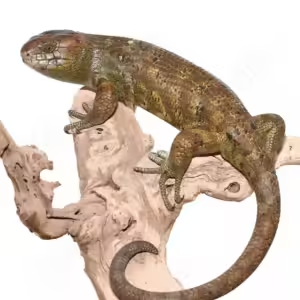

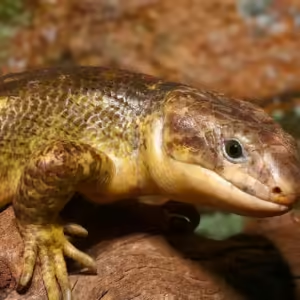

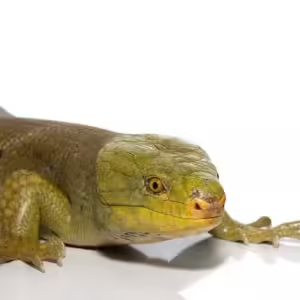
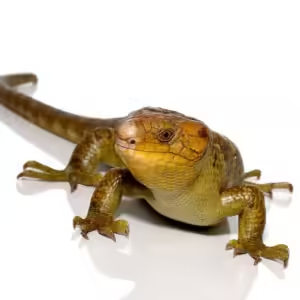





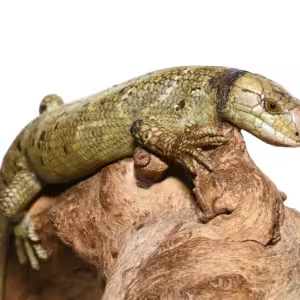


kell kal –
Great customer service. Will definitely order again in the future! Thank you
Bonnie McCool –
The order came as expected. They are just the cutest looking little skinks! Will use again!
Shawn Richardson –
Not my first purchase and won’t be my last
I just purchased a skink and a Egyptian euromastyx from Sunset Reptiles and per usual they were spectacular specimens and the customer service was top notch it is cold here up north and they made sure my reptiles were going to be safe right until they made it to me, always a great experience overnight shipping and always kept me informed 🤗
Rayray Loreto –
I’ve ordered from a couple different places and Sunset reptiles has been the fastest and most reliable with getting my critters to my house safe I’ve gotten a fire ball python, monkey tail skink, a albino corn snake and a blue iguana all of them showed up healthy hydrated and there reptiles are really calm and are easy to handle even my iguana is calm and used to being around people great site give them a try -christopher
Pam Collins –
i have bought 2 times from Sunset and i love the positive vibes they give me on getting a healthy Monkey Tail skinks i love them and they have been a wonderful company to order from my skinks arrived in very good health i would recommend them also the baby turtle i ordered was in great health i love all my critters thank you Sunset Reptiles
Michael Abshire –
Ordered two exotic Monkey Tails both arrived on time and healthy would definitely purchase from Sunset again, my experience was nothing but pleasant and I would recommend them for anyone looking for exotic reptiles.